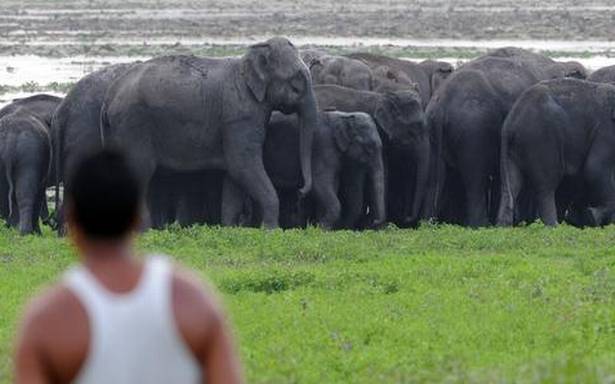Order issued to prevent overexploitation of the shrinking wetland, local authorities say
The Kamrup (Metropolitan) district administration has prohibited community fishing at Deepor Beel, a wetland on the south-western edge of Guwahati and Assam’s only Ramsar site.
The prohibition order under Section 144 of the Cr.PC underlines the possibility of community fishing on January 3 and will remain beyond the mid-January Magh or Bhogali Bihu that is preceded by mass fishing in many parts of the State.
“Some people from the villages around and adjoining Deepor Beel Wildlife Sanctuary such as Keotpara, Mikirpara, Paspara, Azara, Tetelia, in tandem with people from various fringe parts of Guwahati city are likely to venture out to organise community fishing on January 3, 2021 and even after that also,” said an order from Deputy Commissioner of Police (West), Guwahati.
“And whereas such ventures are absolutely illegal under the Wildlife (Protection) Act, 1972, which will also cause irreparable as well as irretrievable damage to the ecosystem of the sanctuary as presented by the divisional forest officer (Guwahati Wildlife Division),” said the order effective from January 1-31.
District officials said the order was necessary to prevent fishing, excavation and construction in and around the wetland that has been shrinking over the years.
Wide range of species
Deepor Beel was designated a Ramsar site in 2002 for sustaining a range of aquatic life forms besides 219 species of birds. A Ramsar site is a wetland designated to be of international importance under the Convention on Wetlands on February 2, 1971, in the Iranian city of Ramsar on the Caspian Sea shore.
According to hydrological experts, the area of the wetland was about 6,000 hectares in the late 1980s. Satellite imagery has revealed that its area has shrunk by at least 35% since 1991.
Deepor Beel officially has an area of 4,014 hectares or 15.5 square miles.
“One of the reasons the wetland is in a precarious state is that it is losing connectivity with small rivers like Kalmoni, Khonajan and Basistha that used to flow via the Mora Bharalu channel through Guwahati,” said Bibhav Talukdar of green group Aaranyak.
Expansion of the city, encroachment upon the natural channels through Guwahati and from the hills around, and a municipal waste dump at Boragaon almost on the edge of the wetland were the other factors, he added.
Assam had 3,513 wetlands and a majority of them had water with low turbidity, officials said.
Source: Read Full Article

